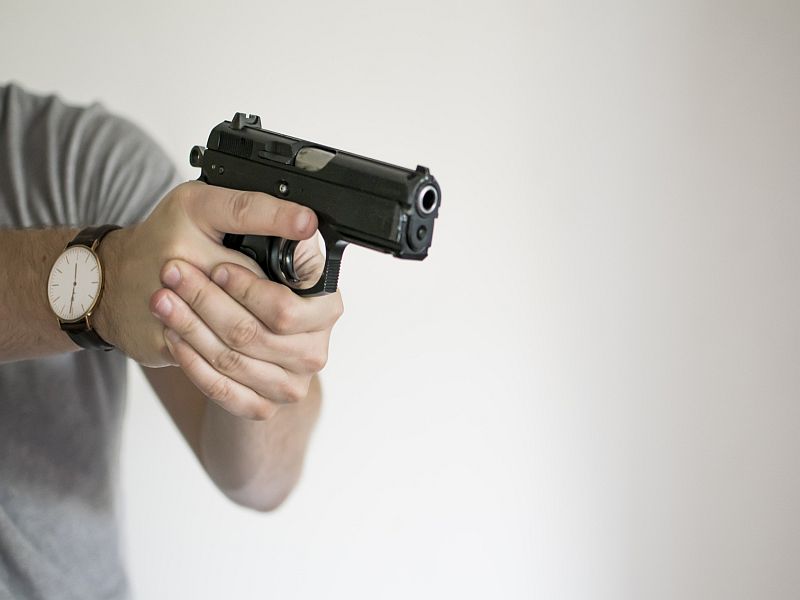
"Red flag" laws that allow police to take guns away from people who've threatened mass shootings are designed to save lives, but do they?
A small, preliminary study suggests they do.
The analysis of 21 different incidents found that none of the threatened shootings occurred after people reported the threat to law enforcement and police confiscated the guns from the potential perpetrator.
"While we can't prove the orders were the things that prevented these shootings, none of them occurred," said lead researcher Dr. Garen Wintemute. He is director of the violence prevention research program at the University of California, Davis. "The next time something like this happens, I would be recommending get the order and get the guns out of the situation."
The finding comes not a moment too soon.
Over the course of a single weekend in early August, two mass shootings in two American cities occurred within 24 hours of each other. In El Paso, Texas, 22 people were killed and 24 were injured in a Walmart store, while nine people were killed and 27 people were injured in a Dayton, Ohio, bar.
In the analysis, Wintemute and his colleagues are seeking to evaluate a total of 414 red flag orders issued in California between 2016 and 2018, in an attempt to assess the effectiveness of these laws. They are using court orders to obtain records related to all of the orders.
As part of their project, the researchers issued findings about the first 21 cases for which they were able to develop a comprehensive evaluation of the specific incident. Their new report was published Aug. 19 in the Annals of Internal Medicine.
California enacted the first red flag law - also called extreme risk protection orders -- in January 2016, Wintemute said. At this time, there are 15 states with similar laws on the books, he added.
However, to date, there had been only two documented cases of red flag laws utilized to prevent mass shootings, the researchers said:
- The first use of Vermont's red flag law in April 2018 prevented a mass shooting at the school of an 18-year-old inspired by the Parkland, Fla., shooting who said, "I'm aiming to kill as many as I can."
- Police recovered 12 firearms from a Washington man in December 2018 after he threatened a mass shooting at a synagogue and a school.
The newly revealed California cases involved people threatening to shoot up their workplace, target a school, or lash out in the midst of a mental health crisis.
In all, 52 firearms were recovered from the potential shooters, who were mostly white males with an average age of 35, the researchers said. Most of these individuals made explicit threats that formed the basis of the red flag order against them.
In one case, a 33-year-old armed security guard quit his job following a dispute with a supervisor. Over the next 11 days, he threatened to shoot one former coworker and texted others to say he was watching them and could kill them if he liked.
The threatened coworker and the security firm reported the man to local police four times. After the red flag order was issued, police removed four handguns from his possession.
Some of the most chilling cases involved people who didn't actually own a gun but had threatened gun violence, Wintemute said.
One such case involved a 21-year-old man recently fired from his job who threatened to shoot his co-workers. Investigators found that he'd bought a shotgun and was in the middle of California's required 10-day waiting period before he could claim it.
Agents told the gun retailer to not release the shotgun, and police found 400 rounds of shotgun ammunition during a subsequent search of the man's home, the researchers said.
These and the other cases provide anecdotal evidence that red flag laws could help prevent gun violence in the United States, said Dr. Georges Benjamin, executive director of the American Public Health Association.
"We know that every time we have one of these mass shootings and we do the look back, we discover something that somebody knew that would have either stopped it had we connected all the dots or simply mitigated it," Benjamin said.
However, he added that more research is needed to calm naysayers who see the laws as an affront to their constitutional rights.
"A lot of people will say this is just an excuse to take people's guns away," Benjamin said. "You have to go farther to really prove this was an intervention that stopped violence."
Red flag laws also should be just one part of a comprehensive approach to firearms violence, Benjamin said.
"Like most things in life that are complex, it requires multiple interventions if you're going to be successful," Benjamin said.
For example, Wintemute said strong waiting period laws couple well with red flag orders to make sure potentially dangerous people can't obtain guns.
Currently, federal law allows retailers to release a gun to a buyer within three days of purchase if the background check hasn't been completed, Wintemute said.
"About 6,000 times a year, federal law enforcement has to make arrangements to get back weapons that were given to prohibited people because background checks weren't done," Wintemute said.
State and federal lawmakers might consider implementing a waiting period like California has, under which a firearm cannot be released to a buyer for 10 days even if the background check is completed earlier, Wintemute said.
Wintemute praised Walmart for having an even tougher waiting period requirement.
"Walmart over a decade ago said we will not release a firearm until the background check is completed, however long it takes," Wintemute said. "I think that's responsible retailing."







0 Comments